When we first arrived at the Starrigavan campground we noticed a pile of skat in the road that looked a great deal like horse poop. The campground host assured us that it was bear skat. It turns out bears eat a lot of grass when they first wake up from their winter hibernation.
Early in the morning of our second day at Starrigavan we were awakened by the sound of an air horn going a-ooo-ga over and over again. It turns out a large brown bear was trying to have his way with the trash bin. When I dropped off the trash later that morning you could see the claw marks he’d left on the side of the bin. It was set up so you had to have opposing thumbs to open it, so he must have been pretty frustrated. Just past the bin in the middle of the road, we discovered yet another bit of evidence that bears don’t just shit in the woods, they do it in the middle of the road—in this case 2 days in a row.
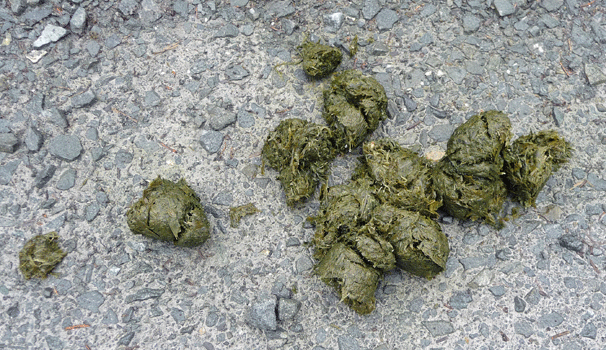
This was our first bit of bear sighting in Sitka and we thought it worth recording.
It was raining so we made our way into downtown Sitka to visit the library and use their free Wi-Fi. My new laptop was being fussy and kept insisting that I contact the network administrator so we gave up and used the desk top computers that were available to anyone there. It was a good place to hang out since it was raining pretty hard. By the time we were done there we decided that we’d take a drive out to the end of the road on the south end of town. We stopped and talked to the librarian for a few minutes and she said that they were having a particularly cold and wet spring, and we were not the only ones who would like a sunny day.
We drove south to Whale Park, where you can see whales in the fall. It had this cool whale sculpture that kids of all sizes can play on.

This is just the tail of a pair of whales.
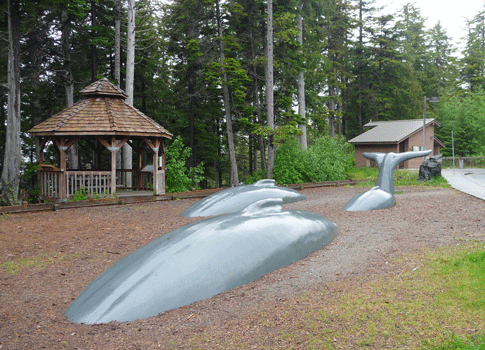
It wasn’t raining much by this point so we took the boardwalk and stairs down to the ocean. Who needs a Stairmaster when you have hikes like this to do?
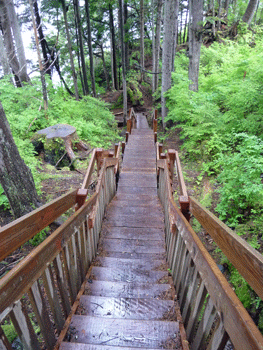
The view from the bottom was pretty nice even with the gray clouds. It’s amazing how many folks live on the little islands that can only be accessed by boat. They all have great waterfront views though...
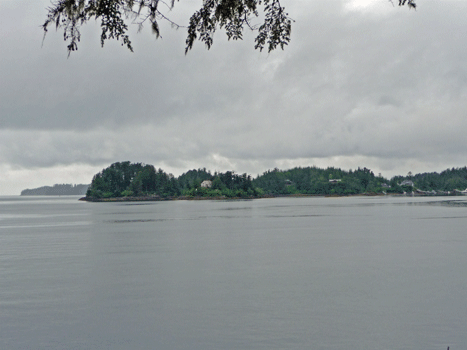
The tide was out and you could see the sea stars and anemones on the rocks below.
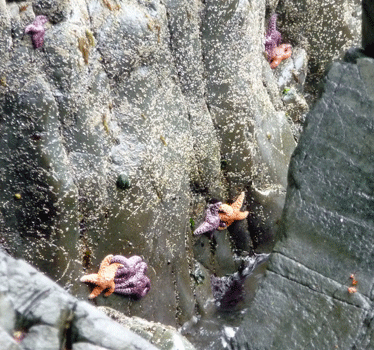
We walked back up the stairs and along the trail where you could see examples of Sitka Spruce (Picea sitchensis),
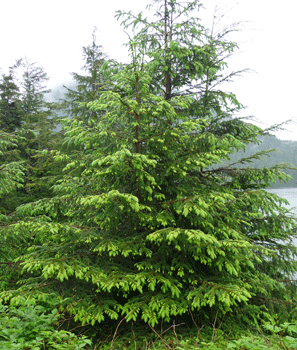
Sitka Mountain Ash (Sorbus sitchensis)
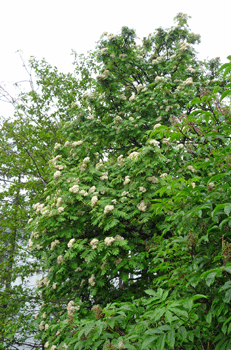
Western Hemlock (Tsuga heterophylla)
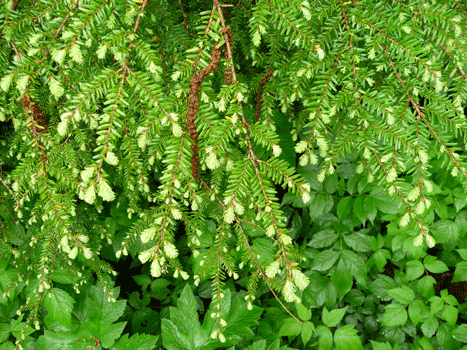
and Oregon Crabapple (Malus diversifolia)
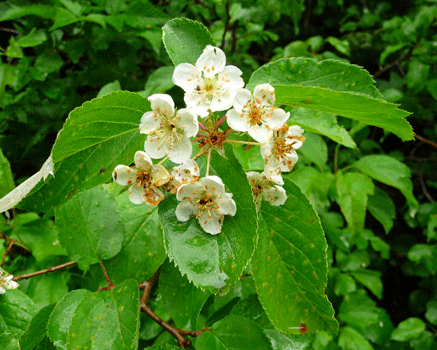
all happily growing. There were also bog blueberries (Vaccinium uliginosum)—something I’d never seen before.
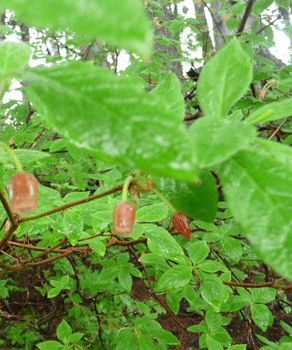
Here’s the view from the other end of the trail out towards the mountains to the south. There are supposed to be big snow-capped ones that direction but they were hiding in the clouds.
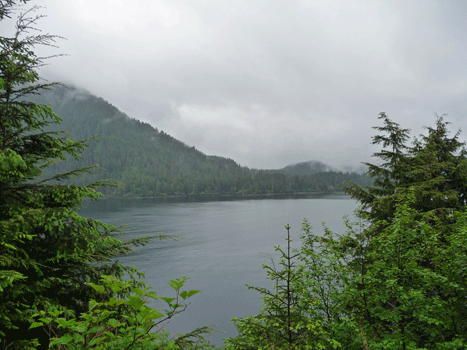
When we got back into the car we noticed this strange little cell tower. We saw them all over town here in Sitka and then have seen them off and on all over Alaska (but not everywhere). Walter calls the pagoda towers. They’re not very tall but I think they’re much better than the cell towers that look like fake trees.
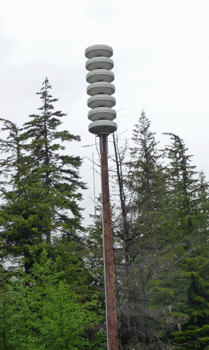
We drove to the end of the road (actually to where it became gravel) and then found a turn out to have lunch. Here’s our view from the car while we had lunch. The clouds and mist would move and you’d get glimpses of the snowy mountains off and on. I liked the way the mist clung the hillside and the trees.
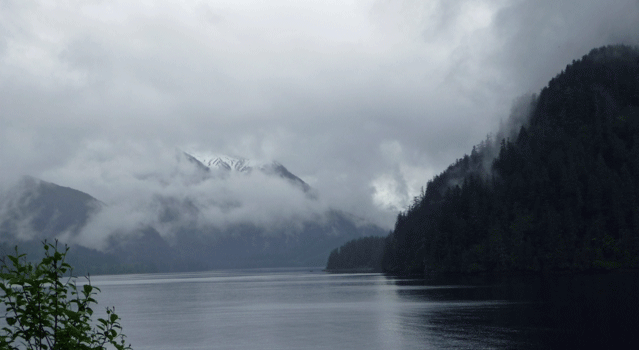
After lunch we decided to visit the Sitka National Historical Park. They have a nice museum and a totem collection that you can visit by taking a nice leisurely walk in the rainforest. It wasn’t raining any more so we figured we’d go for it while we could.
The museum includes both a collection of historical items like this war helmet.
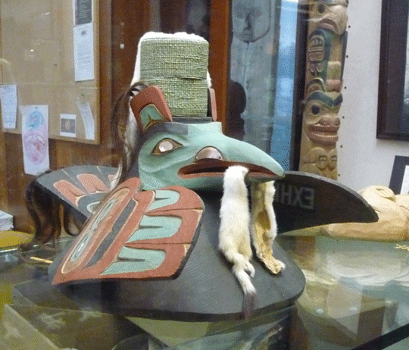
And work by current native artists, like this robe and these paddles..
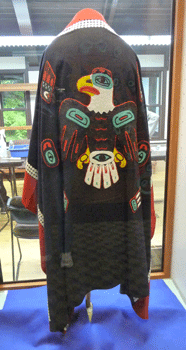
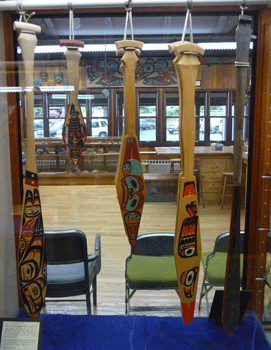
There are studios in the museum where local artists were at work. The Sitka National Historical Park is a great deal about preserving totem poles that were collected from abandoned villages along the Inside Passage. They have used local artists to make replicas of the ones that were deteriorating and have saved the ones they could by having them indoors. Here are just a few of examples of the items that they had on display inside. You can see they come in all sorts of styles.
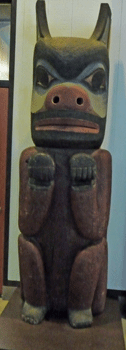
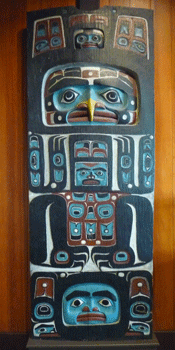
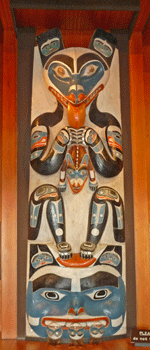
Once we were done with the museum we took the rain forest walk. One of the fun things is that they had signs with not only the local common names and the botanical names of native plants but the names used by the local native people too. It’s amazing how many names folks have come up for Cow Parsnip—the local common name here is Indian Celery and Pushki. The Tlingits call it Yaana.eit.
The way we went the first totem pole you came to was a modern pole that had been installed just last year by a local artist. Here’s the whole pole and a close-up of the bottom of the pole. This is NOT your grandpa’s totem pole!

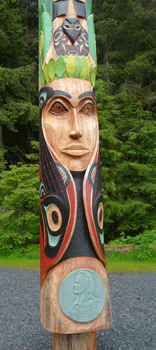
I took photos of all the poles that we saw as we wandered along the forest path. Here are 18 of them, there may actually be more than this since we didn't walk all the loops of the trail.
 |
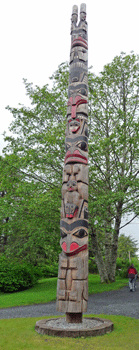 |
 |
 |
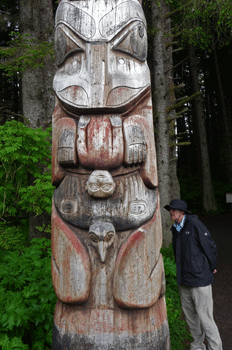 |
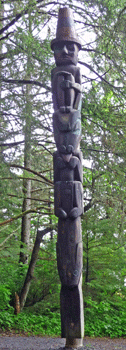 |
 |
 |
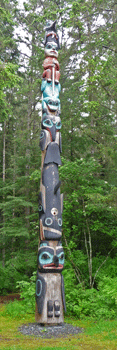 |
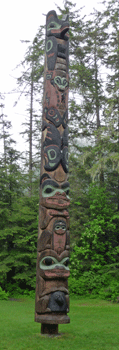 |
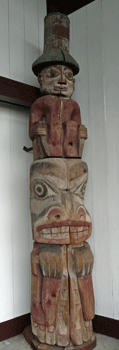 |
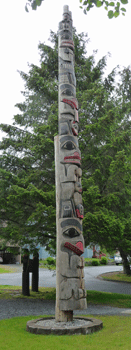 |
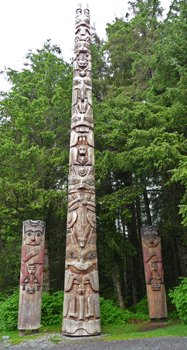 |
During the hike we saw something truly unusual—a bicolored banana slug! We’d noticed that the slugs here were much darker colored and many of them were black but I’ve never seen one like this.
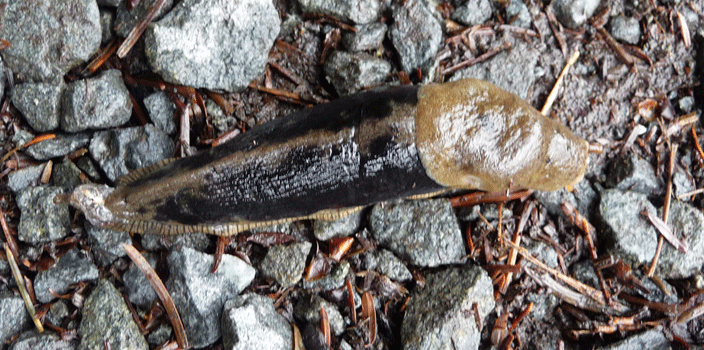
You could see the cruise ship that was in port from the walk and we enjoyed watching the lighters ferry folks from the cruise ship into the marina and the visitor’s center. Sitka made a strategic decision not to build docks for the big cruise ships. So they have to carry their passengers into port in these little orange boats. It certainly helps reduce the impact of the cruise ship passengers on the town and reduces the number of cruise ships that visit the port at all.
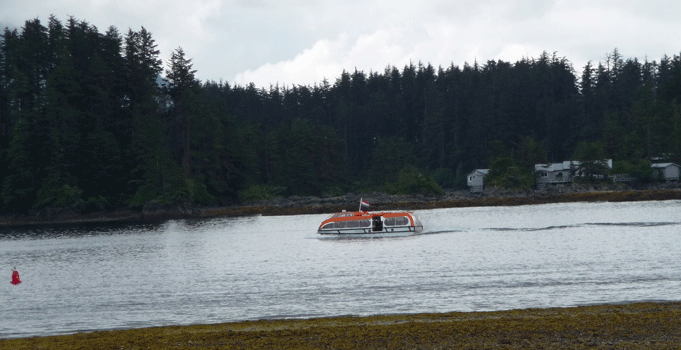
Having seen town, Whale Park, the road south and the National Historical Park and done a little hike there, we were ready to pack it in for the day. Heading back to Starrigavan Campground, Walter noticed this clever hanging garden and stopped so I could take a photo. This is just a small section of these pants/planters. There were 12 pairs of jeans hanging on the railing of the balcony of this house.
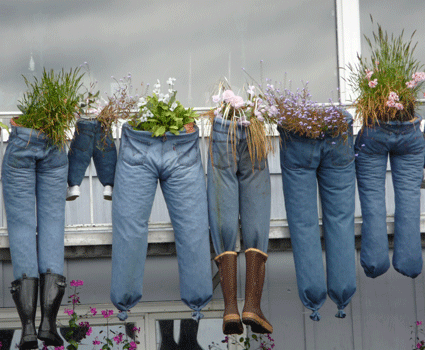
And in the garden out front there was this sign. I think I need one, don’t you?
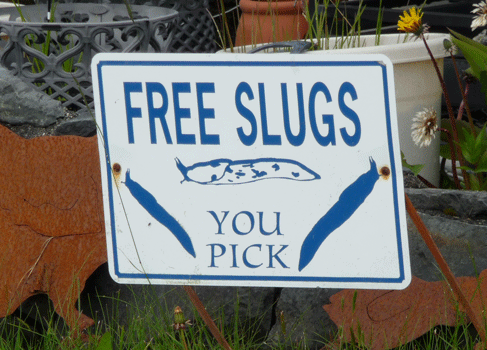
We stopped at one of the viewpoints north of town to catch a bit more of Mt. Edgecomb than I had gotten the day before. Edgecumbe is on the left and Crater Ridge on the right.
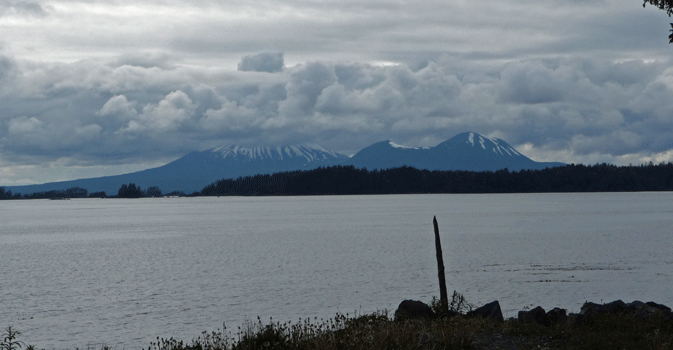
While we were at the Historical Park we heard that folks had seen a male brown bear out in the estuary next to Starrigavan campground late in the afternoon the last several days. So as we went over the bridge to the campground we slowed down and sure enough there was a likely looking brown spot out amongst the grasses.
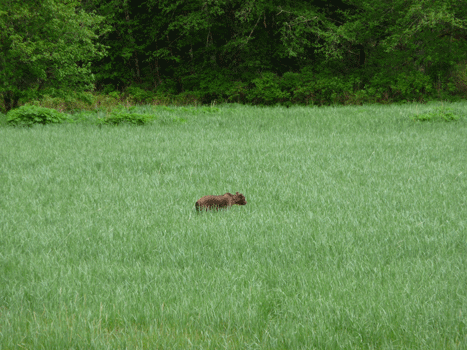
Here he is zoomed in—a bit grainy but clearly a brown (grizzly) bear.
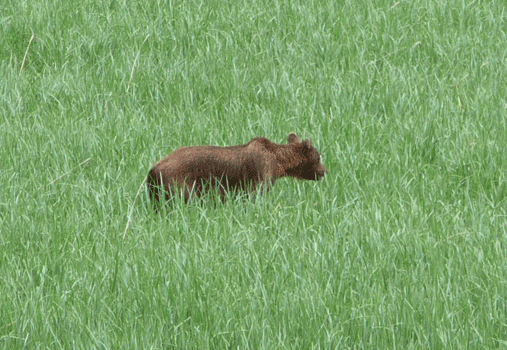
We drove around to the viewing platform (the trail out into the estuary was closed so as not to disturb the bear) and I shot photos as the bear chomped down the grass. He was pretty far away and I only have a 10X zoom (and an older camera) but I’m still pretty happy with the photos I got. Here’s one of my favorites with his mouth open. You can tell that he’s a brown bear by the fact that he has that hump in his back. Black bears (which aren’t always black) are smaller and don’t have the hump.
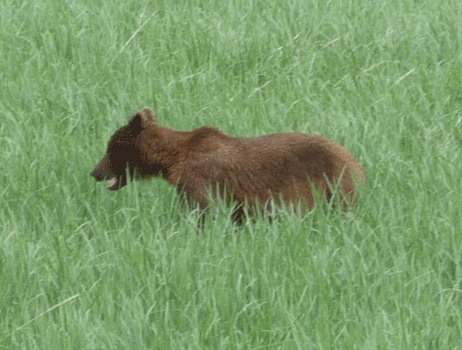
And here are a few for just in case you haven't seen enough of him.
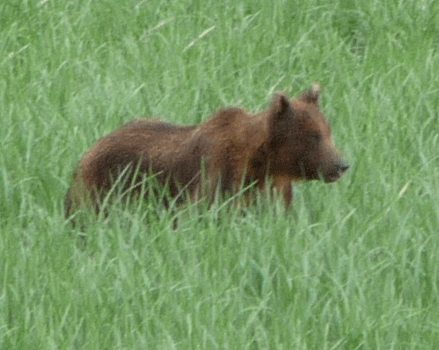
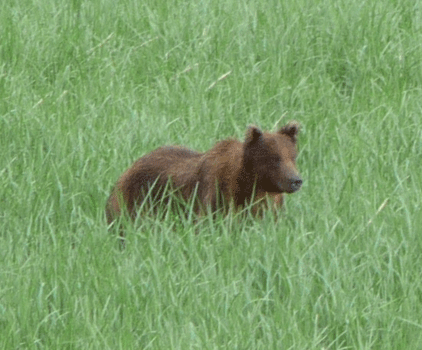
Here's a map of the area where we saw him. We were camping up in the campground at the top of the map.
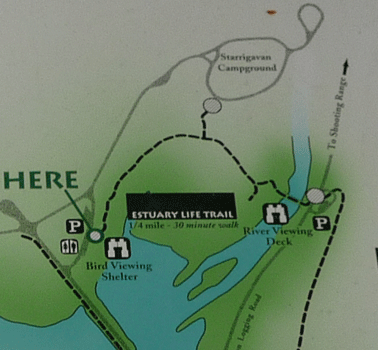
After dinner we went out again in hopes he was still out there but he’d gone on to other things. But I got a nice shot of the estuary with the mountains reflected in the still water.
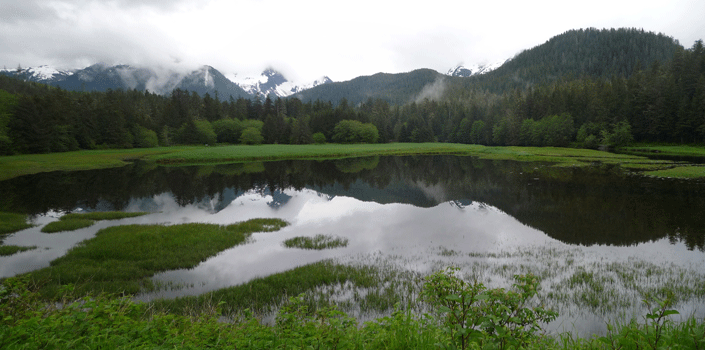
And here’s the view out into the bay. This photo was taken at about 8:30 pm, long before sunset which came at between 11:30 and 12:00 pm. By this point in the trip it really wasn’t getting dark at night—it was just twilight all night.
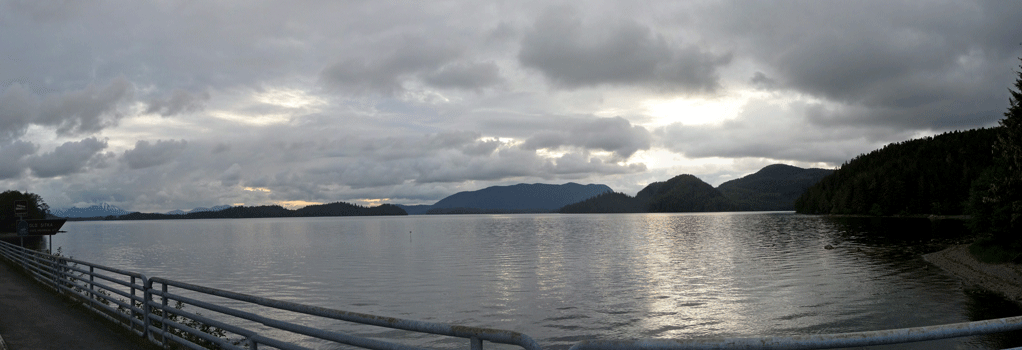
It was a wonderful full day, especially when we didn’t have high expectations because the weather wasn’t that great. In Part X we'll begin to share with you two more days in Sitka with two wonderful hikes and all sorts of nifty flowers, wildlife and views.
